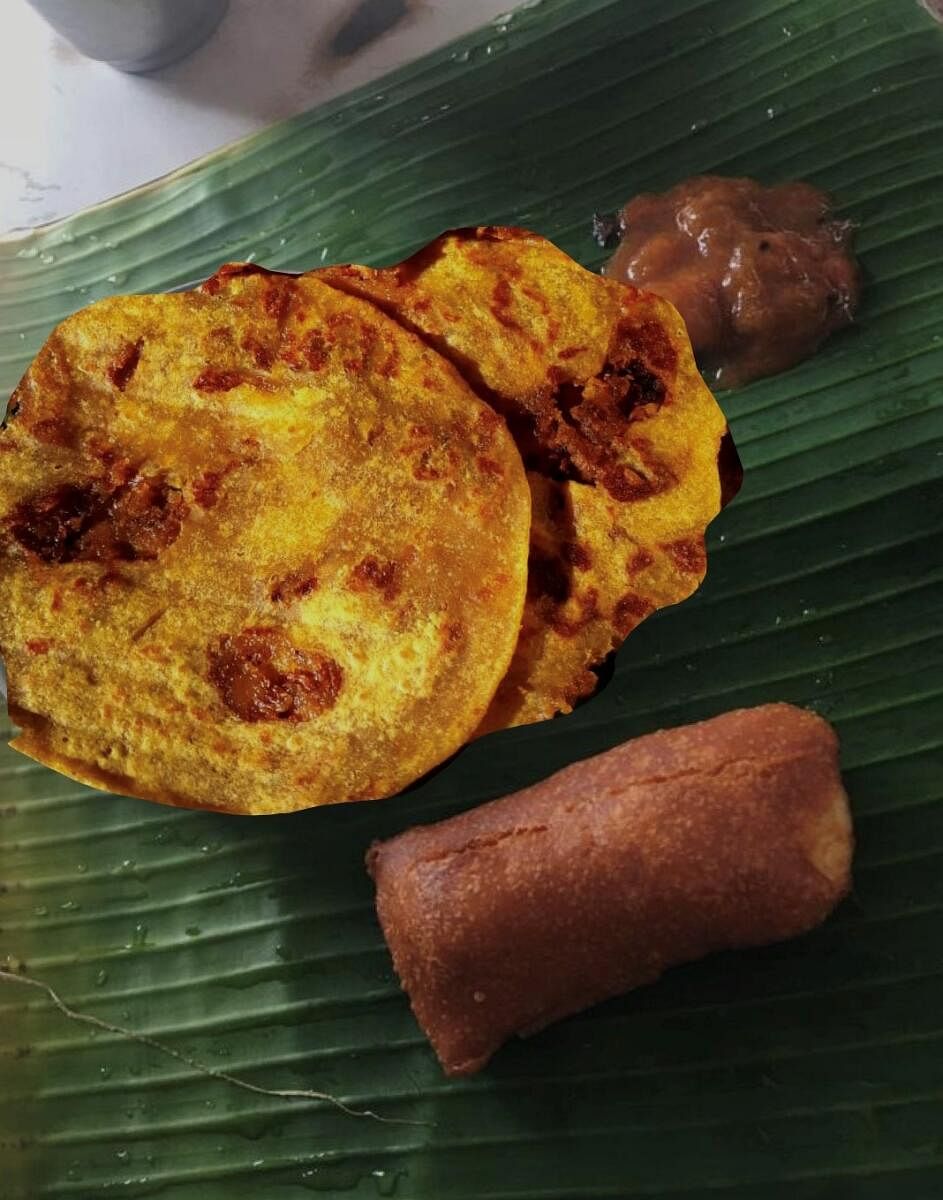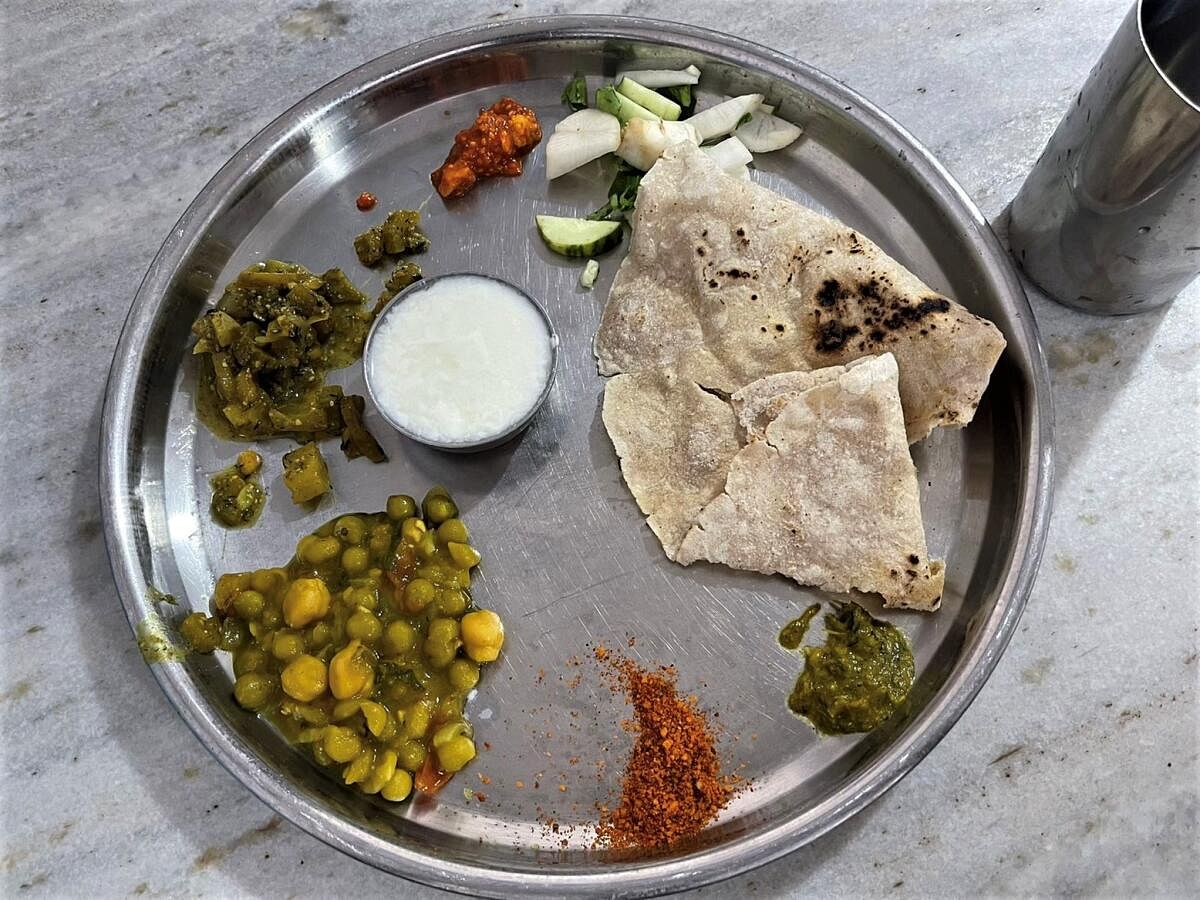
Being dyed-in-the-DNA Bengalureans, we pride ourselves on being world-embracing gourmands, as much familiar with quesadillas and Banh Mi as with uppittu. But mention todadevu or junka, and we find ourselves at a loss.
Recently, touring North Karnataka districts to see heritage monuments, we made the serendipitous discovery of a living heritage.
We were told that to try authentic local food, we had to visit khanavalis. Not just any joint with a “khanavali” signboard, but only those that served food from humble, family-run kitchens.
Our first khanavali experience was in Badami.
The owner and head of the family, typifying the region in dress, speech and hospitality, said food would be prepared fresh, upon order. The menu was simple, the only choice being between akki rotti and jolada rotti.
Appetising aromas arose from the kitchen just beyond the open door. We watched as ladies seated on the floor tossed rottis on the tava with robotic precision. A young man at the far end chopped vegetables and churned buttermilk simultaneously. Glass bangles jangled and ingredients spluttered in the wok.
And when the plates arrived, the wait was more than worth it.
Hot rottis, a raw salad of cucumber, onion, tomato and radish topped with a whole green chilli, a spicy kaalu palya (a dish made of Bengal gram), shenga (peanut) chutney pudi with a small cup of curd, makkekai uppinkai (pickle), sauteed greens and a tall glass of cumin-flavoured buttermilk.
The kind owner was attentive, guiding us on how to hold and tear a rotti using one hand only. He also added that the curd was for mixing into the chutney pudi and not for dipping the rotti pieces. He checked whether the fare was too spicy, and if we would like some butter.
We were also getting educated. Since jowar is an all-weather crop, jolada rotti is the staple in these parts. ‘Kalu-palya’ is a generic name for the non-mushy dal-like dish made of different pulses and legumes. ‘Ennegai’, a dish made of brinjals, is another universal favourite. ‘Soppu’ or greens used in recipes are often a mixed assortment but are best eaten raw. Typically, rice is not part of the daily diet, but since travellers ask for the familiar staple, the khanavalis serve it too. Khanavalis historically began as a service for travelling traders.
As we were leaving, the good man invited us to come by that evening and enjoy their holige (made thrice a week at 4 pm and sold out by 5.)
Other eateries
That first khanavali experience so moved us that we decided to stick only to such eateries throughout the trip. The nourishing rottis were the same everywhere, but we got to taste different side dishes at different places: ennegai, junka (a gram-flour curry), chavalikai palya (cluster beans), menthekadbu (wheat flour dumplings with methi seasoning).
Somewhere near Banashankari, we tried chakoli, a potage of wheat dough strips boiled in a spiced dal gravy. The chutney pudis were also varied, groundnut being ubiquitous. Agasi (flax) and gurellu (sesame) pudis are indeed flavourful.
The most widely-enjoyed snack seems to be girmit, a dish made of spiced puffed rice, comparable to the well-known churmuri.
Among sweets, karadantu, the local answer to the protein bar, is a big hit. It is made of mixed nuts and seeds, flavoured with jaggery and held together by edible gum (gond or antu). Gokak is the karadantu capital, worthy of a GI (geographical indication) tag. Menasinakayi bajji is also a star.
Freshly made food, loving service by family members and inexpensive: What’s not to love about khanavalis? We were smitten for life!
These simple people lead hard lives, yet they frequently offer something to guests and customers generously, like a piece of jaggery or a fruit, as a send-off gift. It is such a heritage that makes as strong an impression on the mind as the artistic marvels hewn in sandstone we encountered.
